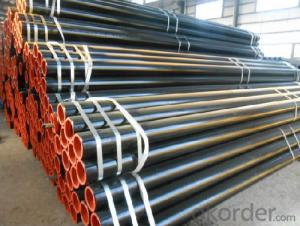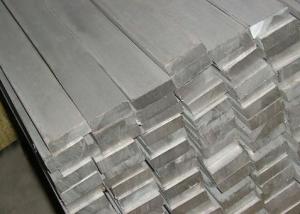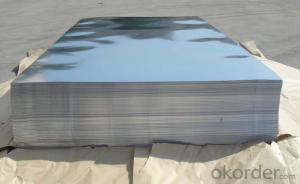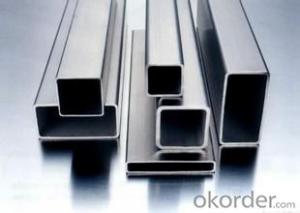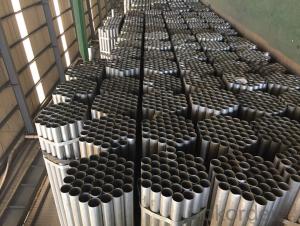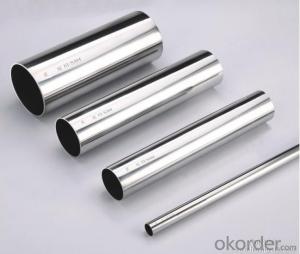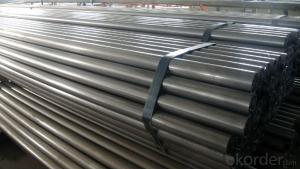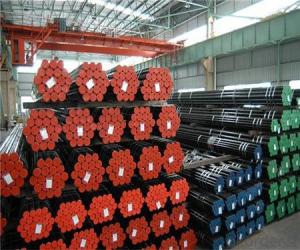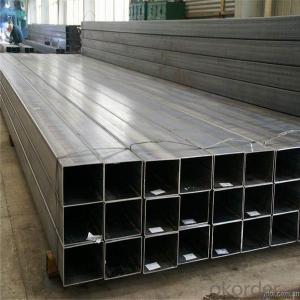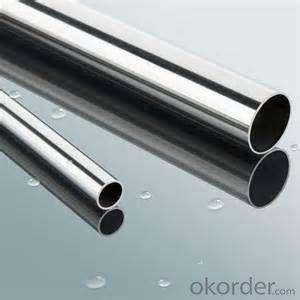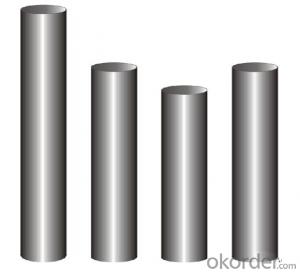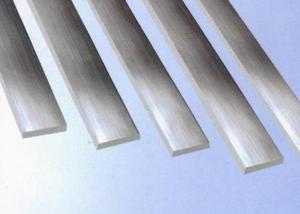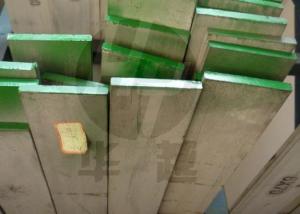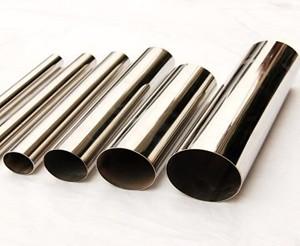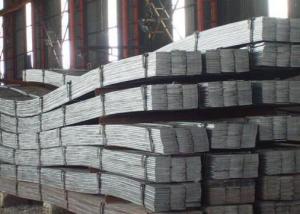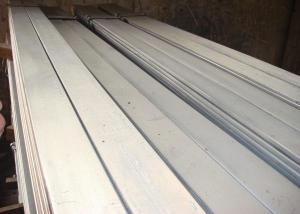Stainless Steel Rectangular Pipe ASTM A554 304 316 201 Made in China
- Loading Port:
- China Main Port
- Payment Terms:
- TT or LC
- Min Order Qty:
- 30 m.t.
- Supply Capability:
- 12000 m.t./month
OKorder Service Pledge
OKorder Financial Service
You Might Also Like
1、Structure of Seamless Pipe ASTM A106/53:
Seamless pipe is formed by drawing a solid billet over a piercing rod to create the hollow shell. As the manufacturing process does not include any welding, seamless pipes are perceived to be stronger and more reliable. Historically seamless pipe was regarded as withstanding pressure better than other types, and was often more easily available than welded pipe.
Application
Decorations, constructions Oil and chemical industry Food industry and pharmaceutical industry Rustless, stainless, good corrosion resistance, anti-wearing, good Water transportation systems
2、Main Features of the Seamless Pipe ASTM A106/53:
• High manufacturing accuracy
• High strength
• Small inertia resistance
• Strong heat dissipation ability
• Good visual effect
• Reasonable price
3、Seamless Pipe ASTM A106/53 Specification:
Standard | GB, DIN, ASTM ASTM A106-2006, ASTM A53-2007 |
Grade | 10#-45#, 16Mn 10#, 20#, 45#, 16Mn |
Thickness | 8 - 33 mm |
Section Shape | Round |
Outer Diameter | 133 - 219 mm |
Place of Origin | Shandong, China (Mainland) |
Secondary Or Not | Non-secondary |
Application | Hydraulic Pipe |
Technique | Cold Drawn |
Certification | API |
Surface Treatment | factory state or painted black |
Special Pipe | API Pipe |
Alloy Or Not | Non-alloy |
Length | 5-12M |
Outer Diameter | 21.3-610mm |
Grade | 20#, 45#, Q345, API J55, API K55, API L80, API N80, API P110, A53B |
Standard | ASME, ASTM |
1.ASTM A554, Q/GBS1-2005, customers' requests available
2.10*10mm,12*12mm,18*18mm,23*23mm,38*38mm,50*50mm,
3.70*70mm,100*100mm,20*10mm,23*11mm,24*12mm
4. 25*13mm,36*23mm,40*20mm,50*20mm,60*15mm,75*45mm
5.Cold drawn, Annealed with nitrogen protection, Ultrasonic welding,
4、Packaging & Delivery
Packaging Details: | seaworthy package,bundles wrapped with strong steel strip |
Delivery Detail: | 15-30days after received 30%TT |
5、FAQ of Seamless Pipe ASTM A106/53:
①How is the quality of your products?
Our products are manufactured strictly according to national and internaional standard, and we take a test
on every pipe before delivered out. If you want see our quality certifications and all kinds of testing report, please just ask us for it.
Guaranteed: If products’ quality don’t accord to discription as we give or the promise before you place order, we promise 100% refund.
②How about price?
Yes, we are factory and be able to give you lowest price below market one, and we have a policy that “ for saving time and absolutely honest business attitude, we quote as lowest as possible for any customer, and discount can be given according to quantity”,if you like bargain and factory price is not low enough as you think, just don’t waste your time.Please trust the quotation we would give you, it is professional one.
③Why should you chose us?
Chose happens because of quality, then price, We can give you both.Additionally, we can also offer professional products inquiry, products knowledge train(for agents), smooth goods delivery, exellent customer solution proposals.Our service formula: good quality+good price+good service=customer’s trust
SGS test is available, customer inspection before shipping is welcome, third party inspection is no problem.
6、Seamless Pipe ASTM A106/53 Images:
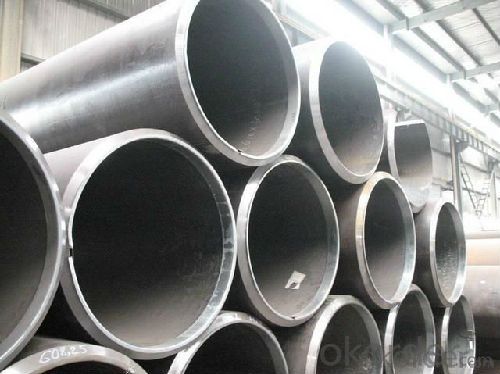
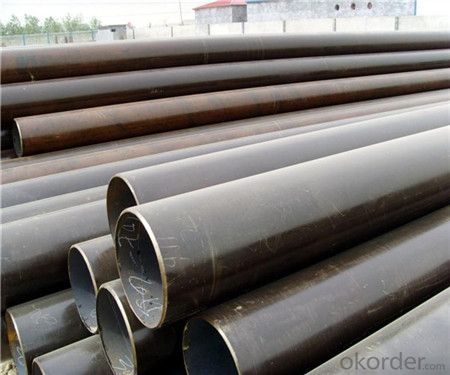
- Q: Can stainless steel pipes be used for swimming pool systems?
- Yes, stainless steel pipes can be used for swimming pool systems. Stainless steel is highly resistant to corrosion, making it an ideal choice for pool applications where exposure to chlorine and other chemicals is common. Additionally, stainless steel pipes offer durability, longevity, and excellent performance in high-temperature environments, making them a reliable option for swimming pool systems.
- Q: Are stainless steel pipes recyclable?
- Yes, stainless steel pipes are recyclable. Stainless steel is a highly sustainable material that can be recycled repeatedly without losing its properties or quality. Recycling stainless steel pipes helps conserve resources, reduce waste, and minimize environmental impact.
- Q: Can stainless steel pipes spray black paint?
- Stainless steel pipes can spray black paint.The surface of stainless steel has a smooth surface
- Q: Can stainless steel pipes be insulated with polycaprolactone?
- Stainless steel pipes can indeed be insulated with polycaprolactone. Polycaprolactone, also known as PCL, is a thermoplastic polymer that has excellent thermal insulation properties. It has a low thermal conductivity, which makes it an effective choice for insulating pipes and preventing heat loss or gain. Additionally, PCL is also resistant to moisture and chemicals, making it suitable for various environments and applications. When applied as insulation on stainless steel pipes, polycaprolactone can help maintain the desired temperature, reduce energy consumption, and prevent condensation.
- Q: What is the difference between 316 and 316LN stainless steel pipes?
- 316 and 316LN stainless steel pipes are both variations of the same grade of stainless steel, which is known as 316. However, there are some differences between the two. The main difference between 316 and 316LN stainless steel pipes lies in their nitrogen content. 316LN stainless steel contains a higher amount of nitrogen compared to 316 stainless steel. The addition of nitrogen improves the strength and corrosion resistance of the material, making it more suitable for certain applications. Due to its increased nitrogen content, 316LN stainless steel pipes exhibit improved resistance to pitting and crevice corrosion, especially in chloride environments. This makes them particularly suitable for use in marine environments or other applications where the pipes may come into contact with corrosive substances. Another difference between the two grades is their availability and cost. 316 stainless steel pipes are more widely available and commonly used, making them generally more cost-effective compared to 316LN stainless steel pipes. However, 316LN stainless steel pipes may be required for specific applications where enhanced corrosion resistance is necessary. In summary, the main difference between 316 and 316LN stainless steel pipes lies in their nitrogen content, which affects their corrosion resistance properties. While 316 stainless steel is more widely available and cost-effective, 316LN stainless steel offers improved resistance to pitting and crevice corrosion, making it suitable for certain applications.
- Q: Are stainless steel pipes suitable for oil and gas applications?
- Yes, stainless steel pipes are suitable for oil and gas applications. Stainless steel is highly resistant to corrosion, making it ideal for transporting and storing oil and gas, which often contain corrosive elements. Stainless steel pipes also have high strength and durability, ensuring they can withstand high-pressure conditions and harsh environments. Additionally, stainless steel is easy to clean and maintain, reducing the risk of contamination in oil and gas operations. Overall, stainless steel pipes are a reliable and cost-effective choice for oil and gas applications.
- Q: Can stainless steel pipes be used in underground installations?
- Yes, stainless steel pipes can be used in underground installations. Stainless steel is a highly durable and corrosion-resistant material, making it suitable for underground applications where the pipes are exposed to moisture and other environmental factors. Additionally, stainless steel pipes have high strength and can withstand pressure, making them a reliable choice for underground installations.
- Q: Can stainless steel pipes be used for ornamental purposes?
- Yes, stainless steel pipes can be used for ornamental purposes. Stainless steel is a versatile material that offers a sleek and modern aesthetic, making it well-suited for decorative applications. The durability and corrosion resistance of stainless steel also make it an excellent choice for outdoor installations or in humid environments where other metals might deteriorate over time. Stainless steel pipes can be fabricated into various shapes and sizes, allowing for creative and visually appealing designs. They are commonly used in architectural structures, such as railings, handrails, and balustrades, as well as in decorative furniture, lighting fixtures, and artwork. Additionally, stainless steel pipes can be polished or finished in different ways to enhance their appearance and create a desired decorative effect. Overall, stainless steel pipes provide a durable and visually pleasing solution for ornamental purposes.
- Q: Are stainless steel pipes suitable for pulp and paper industries?
- Yes, stainless steel pipes are suitable for pulp and paper industries. They are resistant to corrosion, heat, and chemicals, making them ideal for transporting corrosive and abrasive fluids commonly found in these industries. Stainless steel pipes also have high strength and durability, ensuring long-term performance in demanding environments.
- Q: Are stainless steel pipes resistant to caustic solutions?
- In general, stainless steel pipes have a resistance to caustic solutions. Stainless steel is well-known for its exceptional ability to resist corrosion, which is why it is a preferred choice for various industries that handle corrosive substances like caustic solutions. The presence of a high amount of chromium in stainless steel creates a protective layer on the pipe's surface, preventing any reaction with caustic solutions and other corrosive materials. It is important to mention, however, that the resistance of stainless steel pipes can differ depending on the specific grade and composition of the stainless steel being used. Therefore, it is advisable to seek advice from a professional or consult the corrosion resistance properties of the specific stainless steel grade to ensure its suitability for the intended application involving caustic solutions.
Send your message to us
Stainless Steel Rectangular Pipe ASTM A554 304 316 201 Made in China
- Loading Port:
- China Main Port
- Payment Terms:
- TT or LC
- Min Order Qty:
- 30 m.t.
- Supply Capability:
- 12000 m.t./month
OKorder Service Pledge
OKorder Financial Service
Similar products
Hot products
Hot Searches
Related keywords
